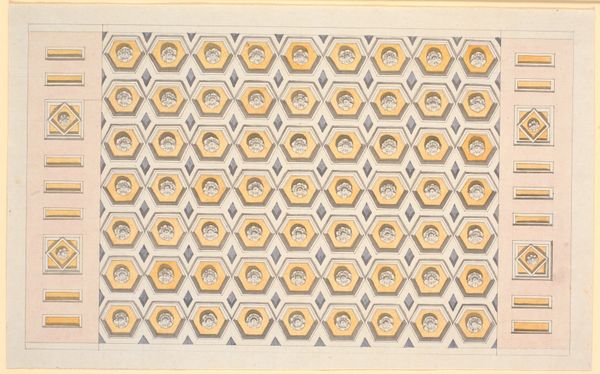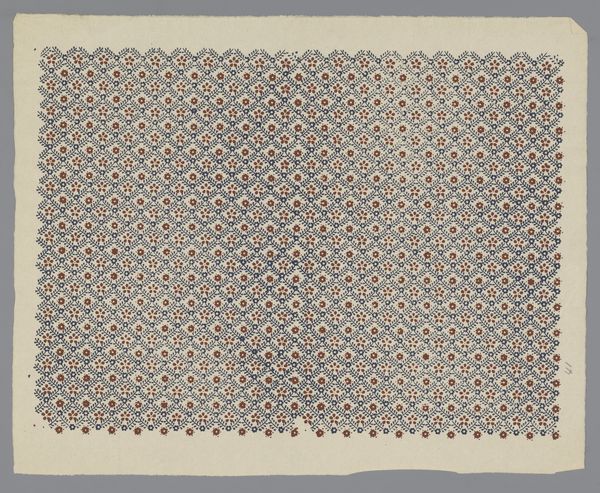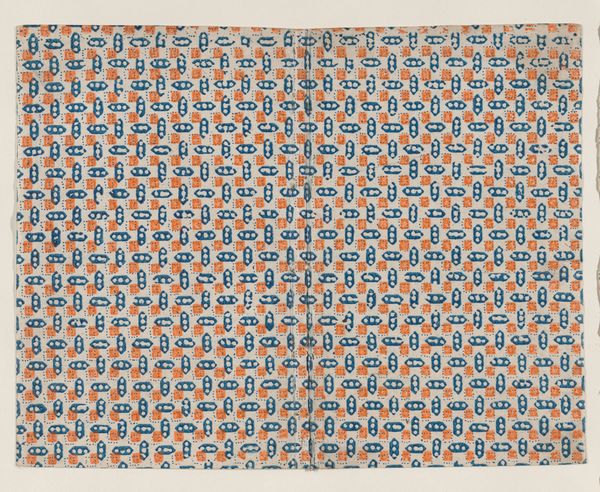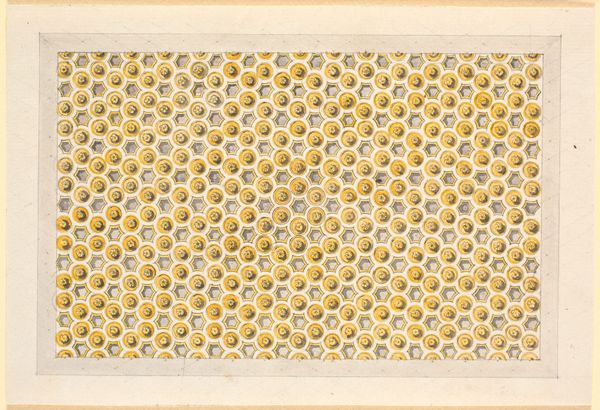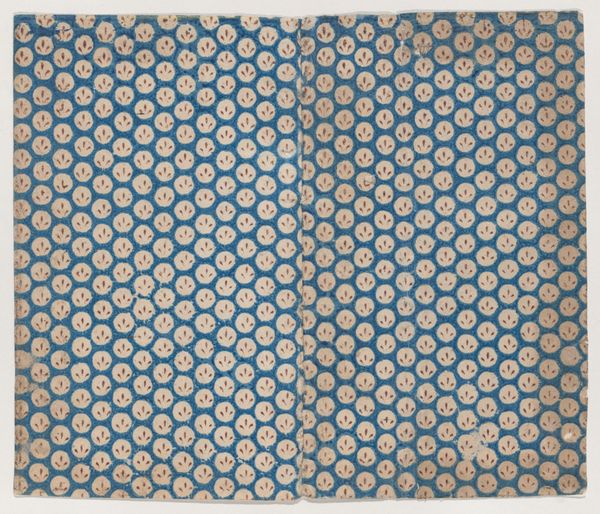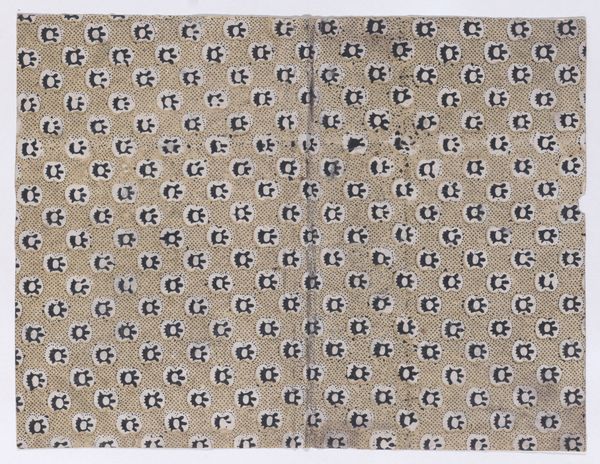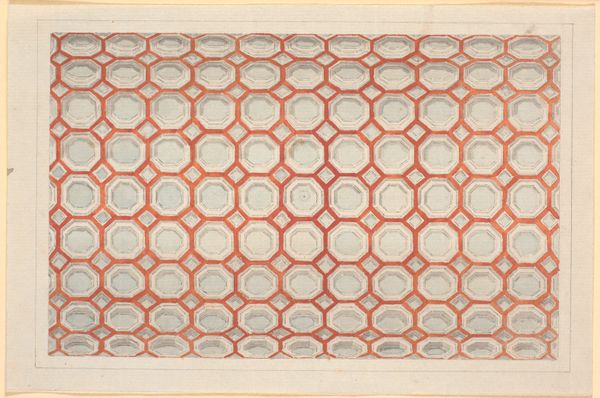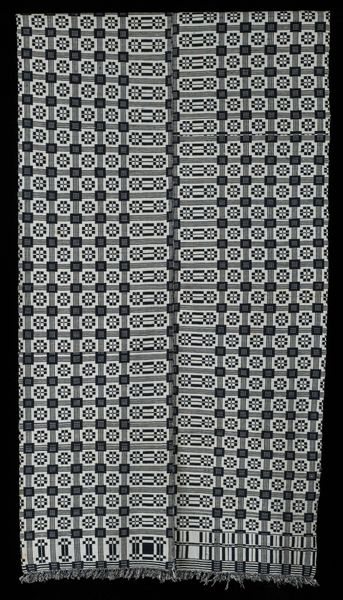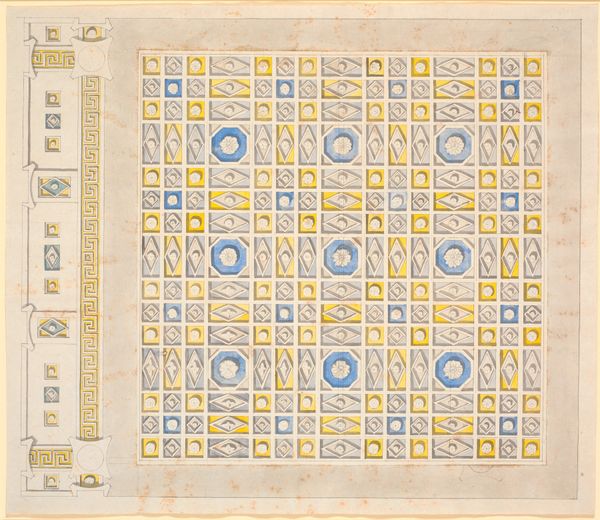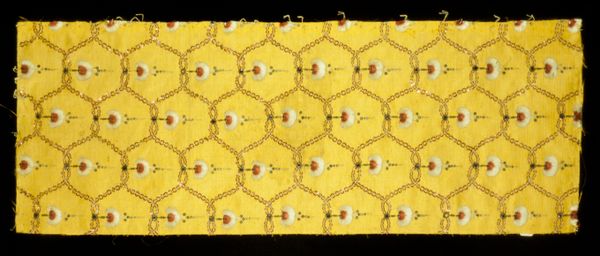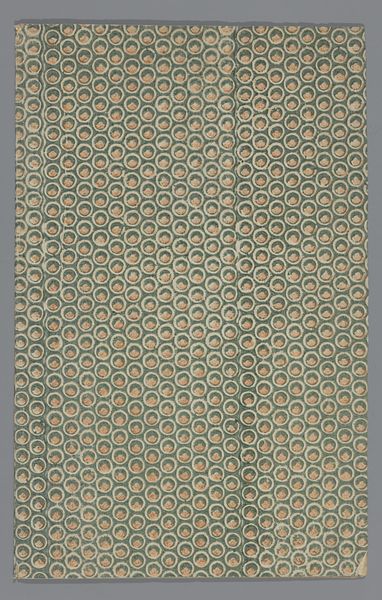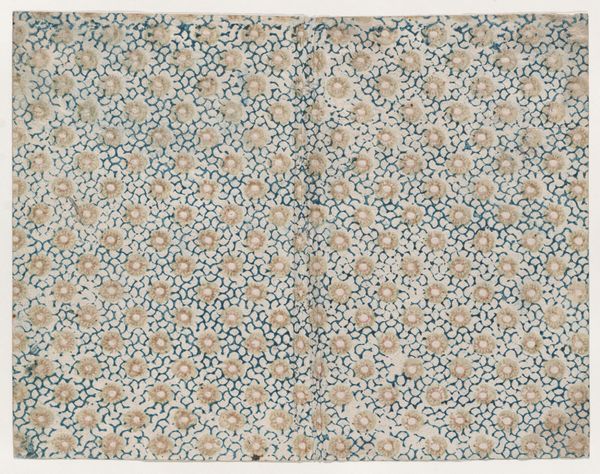
Udkast til et loft med ottekantede, sekskantede og kvadratiske kassetter i gult og lilla 1743 - 1809
0:00
0:00
drawing, architecture
#
drawing
#
pattern
#
geometric
#
decorative-art
#
architecture
Dimensions: 415 mm (height) x 219 mm (width) (bladmaal)
Curator: Up next we have a drawing attributed to Nicolai Abildgaard, created sometime between 1743 and 1809. It's titled "Udkast til et loft med ottekantede, sekskantede og kvadratiske kassetter i gult og lilla" or "Draft for a ceiling with octagonal, hexagonal, and square coffers in yellow and purple". Editor: The instant feeling is a very organised yet almost unsettling geometry, and yet the pastel shades offer a real calming contrast! Curator: Precisely! It's a proposed design for a ceiling, all meticulously drafted. Notice the interplay of shapes; the octagons frame circular forms. How might such a pattern engage in lived space do you suppose? Editor: Well, you’d have to look at who’s paying for it, right? These kinds of ceiling coffers scream opulence! Were talking about the labor required and also access to quality pigments. I wonder who had that sort of access, in late eighteenth century Denmark. Curator: Good point. Given Abildgaard's background—director of the Academy, history painter—we could assume that he'd be drafting such design elements for aristocratic spaces and wealthy patrons! Perhaps even a Royal commission? Editor: That makes sense. Thinking about these ornate coffers, I picture craftspeople carefully gilding, adding to this vision and embedding these forms onto the architecture to display not only material wealth but cultural status. It really pushes boundaries to think beyond fine art. Curator: Absolutely. He was engaging directly with architectural design! His work extends into spaces typically segregated from easel painting. The colours themselves are very delicate; there's an ethereal almost otherworldly feel, despite the rigid geometric structures. Editor: Right, it becomes less about mere utility or surface adornment. It elevates craft through its intellectual execution, especially when it enters the art history discourse, isn’t it? Curator: Certainly! By acknowledging this "draft" and bringing together material context with design thinking we start to grasp Abildgaard’s work in much more exciting and holistic light. Editor: Exactly, looking at the work in terms of consumption and craftsmanship invites so much conversation, whereas considering formal style it often obscures those ideas.
Comments
No comments
Be the first to comment and join the conversation on the ultimate creative platform.
